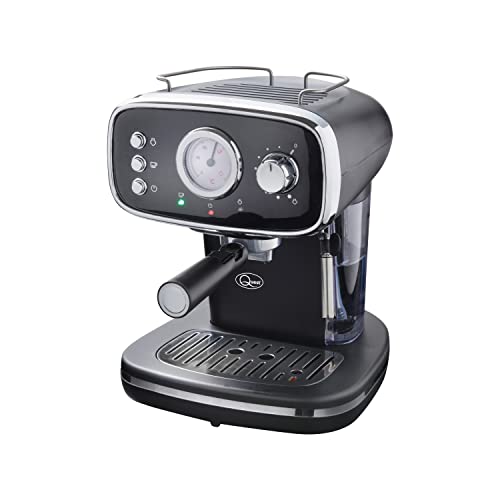How to Build a Professional Espresso Machine
For cafes and coffee shops looking to attract customers with a love of barista and espresso, this is a great option. It's the official machine used for World Barista Championships and it truly shows.
The barista can refill the water reservoir throughout their shift. The machine also features steam wands that cool-touch as well as a hot water tap for tea.

Water
A commercial espresso machine should be able to create large quantities of espresso-based drinks effectively. That's why they are generally constructed from stainless steel, which is more durable and resistant to breakage and scratches. Stainless steel espresso machines also make it easier to maintain and clean.
A good machine has a shut off valve for the water line in order to prevent limescale build up. This will ensure any repairs are limited to affected components of the machine and won't affect the operation of the rest.
When you select your water be sure to test it and treat it correctly to get the best results. For instance the distilled water can be refining by adding a small amount of minerals back into it. It can enhance the taste and negate its erosive qualities, but could also cause damage to certain machines. Remineralized wate makes the boiler sensor think that the machine is full however it's not. This can cause overheating and damage the machine.
Grinder
The grinder is an essential component of a successful espresso maker. It is used to take a raw, unground bean and turns it into a finely ground coffee that can then be put into the filter basket to produce an excellent extraction.
Professional commercial grade machines include grinders that can be programmed for various sizes of drinks. This ensures consistency in results each time. Super-automatic machines go a step further and automatize the entire process from brewing through grinding and dispensing. These kinds of machines usually get high marks in Lab tests due to their hands-free accessibility.
Going On this page -automatic or manual machines demand more work from the barista, but the results are worth it. This model won the Good Housekeeping Coffee Award in 2022 for its intelligent dosing mechanism that measures and dispensing the correct amount of coffee every time. It also comes with an low-pressure pre-infusion system for well-balanced extraction, as well as an milk frother that created thick, rich steamed milk in our tests.
Temperature
When it is time to make espresso, temperature plays a major factor in the taste and quality of your coffee. If the water isn't at its optimal temperature, it could slow the extraction process and lead to bitter coffee.
Luckily, the best espresso machines come with tools that will allow you to keep your water at the right temperature. One method for doing this is by using PIDs, which monitors and adjusts the temperature of the water. Another method is using a double boiler system. You can use one boiler to heat steam and water for tea, and use another to heat water to the brewing temperature.
Carles explains how these systems can make a difference for large corporations as well as baristas who work from home. They can make it much easier for newbies to dial in the perfect espresso shot since they can keep an exact temperature and eliminate some of the variables that can alter the flavor profile. It is also much easier for baristas with more experience to get their espressos just the way they want.
Pressure
The amount of pressure an espresso machine employs is another factor which affects the quality of the coffee it produces. Many espresso drinkers notice that their beverages taste different depending on the pressure used, even when all other elements remain the same.
The majority of commercial machines utilize 9 bars of pressure in order to make espresso. These machines tend to be pump-driven, not steam-driven. Although high-pressure machines are offered but they require a group head that is more complicated to handle the higher levels of pressure.
While you may see espresso machines advertising 15 or even 18 bars of pressure, nine bars is generally considered the gold standard for making consistently excellent espressos. These higher-pressure machines are typically smaller and designed for home use.
To put 9 bars of pressure in perspective, it's over four times the amount that is exerted by the air in your car tire. The greater the pressure a professional espresso maker can apply, the better it will be at extracting flavor out of your favorite coffee beans. It's worthwhile to invest in high-end machines that produce the highest quality results.
Barista Skills
A barista must be able to take and process orders from customers quickly and accurately. This is especially crucial during busy periods in the coffee shop. A good understanding of customer service is also essential for building customer relationships and increasing sales for the shop. This could include recognizing regular customers, resolving issues efficiently and remaining optimistic and amiable in tough situations.
Having strong multitasking skills is usually required for baristas as they may have to take orders, operate the cash register, communicate orders to coworkers and answer phone calls at the same time. This ability allows customers to enjoy a pleasant experience in the cafe by ensuring that orders are served promptly.
It is important that a barista's skills are developed to be able to prepare various types of coffee using an espresso machine. Learn about the various kinds of espresso by studying about them, trying them in person, and watching online videos. Many baristas find it helpful to take classes offered by various organizations.
